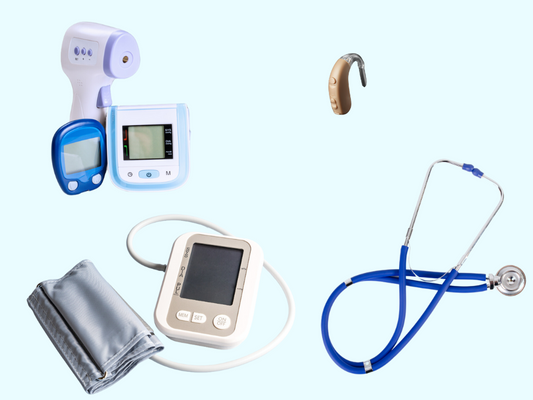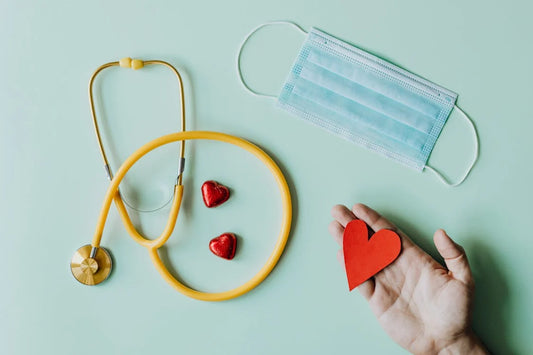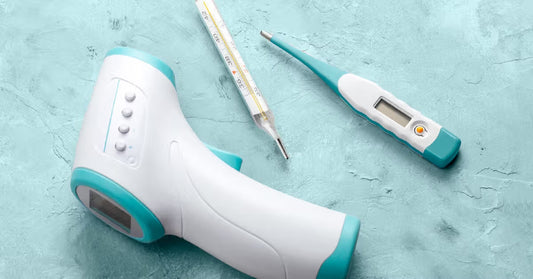
Ultrasound Gel: A Key Player in Modern Medical Imaging
Medical imaging is one of the most significant advancements in healthcare, allowing physicians to diagnose, monitor, and treat various conditions without invasive procedures. Among the many tools and technologies that make medical imaging possible, ultrasound gel plays a crucial role. While it may seem like a simple accessory, ultrasound gel is a key player in ensuring that ultrasound imaging works effectively. In this blog post, we will explore the significance of ultrasound gel, its function, how it's used, its composition, and the innovations surrounding this essential medical product.
1. Introduction to Ultrasound Technology
This is a general overview before talking about any more about the role played by ultrasound gel. Without saying it, of course, ultrasound technology, in general, needs to be understood before going into the discussion about the role of ultrasound gel. Ultrasound, or sonography, is a very commonly used method of diagnostic imaging. In this method, high-frequency sound waves produce images of deep internal body structures.
How does it work? The ultrasound transducer emits sound waves that reflect off various tissues, organs, or liquids and then return to the transducer. These returning waves are then interpreted by a computer to create an image of the scanned area.
Since ultrasound is non-invasive, radiation-free, and adaptable, it comes handy in various uses ranging from prenatal care to injury diagnosis in soft tissue to even guiding some forms of treatments like biopsies. A medium must, however be present for sound waves to be transmitted efficiently from the transducer into the body for the image created by ultrasound to be effective; this is where ultrasound gel comes into play.
2. The Importance of Ultrasound Gel in Imaging
Ultrasound gel might seem like such an underwhelming substance, but it serves the critical function of making ultrasound imaging possible. In the absence of the gel, the loss in signal quality would be immense simply because the ultrasonic waves are quite lousy for traveling over air. Sound waves would scatter if air, for instance, managed to seep between the transducer and the patient's skin; many images would then turn out either hazy or useless.
2.1 How Ultrasound Gel Works
The ultrasound gel is a coupling agent between the patient's skin and the ultrasound transducer. It eliminates air gaps and achieves proper contact by providing an uninterrupted medium for the progressing sound waves. It provides for a brighter image reflected back from the gel, allowing the sound waves to pass down into the tissue underneath from the skin.
2.2 Characteristics of Ultrasound Gel
Ultrasound gel therefore has to meet particular requirements to be useful.The primary ingredient used is water to enhance the transmission of sound waves.
- Non-greasy and easy to clean: Because gel as a component is not generally greasy in nature, the skin wipes off a clean piece after the procedure is done.
- Hypoallergenic: Most skin types, including sensitive skin, are safely used because ultrasound gel is designed to be non-irritating.
- It is fairly thick in viscosity; it doesn't slide off the skin because of its gel-like consistency and stays on the skin during the treatment.
3. The Composition of Ultrasound Gel
Ultrasound gel basically comprises a simple composition that is, at the same time, easily understandable and highly effective. Typically, the gel contains the following constituents:
- Water: As water is a good conductor of the ultrasonic waves, the essential component in the gel ensures that ultrasonic waves are transmitted with maximum efficiency.
- Glycerin or propylene glycol: This ingredient provides a thick, smooth texture to the gel. Along with this, these confer a property to the gel which helps it stick to the patient's skin and also delays the process for the gel to not dry out quickly.
- Preservatives: Some prescription ultrasound gels are impregnated with preservatives like parabens to increase shelf life and prevent microbial growth.
- Dyes and Fragrances: Some gels have added fragrances to make the gel more attractive for use. Colors are added to some. To minimize the risk of causing irritation, most medical-grade gels do not contain these additives.
4. Different Types of Ultrasound Gel
While all ultrasound gels exhibit some basic properties, they differ according to the condition and type of procedure required by the patient as follows:
- Standard Ultrasound Gel: General is the most commonly used gel for routine ultrasound procedures. For examples, it is used for musculoskeletal, prenatal care, and abdominal images.
- Sterile Ultrasound Gel: Sterile ultrasound gel is used in procedures that require to be sterile, including any kind of invasive ultrasounds, such as transvaginal or transrectal ultrasounds, or if the patient has open sores or wounds. To ensure that there is less chance of contamination, this gel is packaged in small, disposable containers.
- Hypoallergenic Ultrasound Gel: Some patients may be allergic or have sensitive skin to certain materials. For a negative skin reaction to be prevented, hypoallergenic gels aren't manufactured with common irritants, which include dyes and fragrances.
- Eco-friendly or biodegradable Ultrasound Gel: Green ultrasound gels composed of biodegradable material are becoming increasingly popular in the course of continuing awareness on sustainability issues in healthcare. These gels are intended to be disposed of in such a way that causes the least amount of environmental disruption once they have been used.
5. The Use of Ultrasound Gel in Different Medical Fields
Ultrasound gel is vital in any medical specialty in which ultrasound imaging is predominantly applied. It's time now to consider how ultrasonic gel contributes in some specialties:
5.1 Obstetrics and Gynecology
Ultrasound imaging is essential in prenatal care since it helps doctors trace the development of a fetus throughout a pregnancy. The gel ensures the pictures of the developing baby are clear and sharp to enable the early spotting of any possible anomalies.
5.2 Cardiology
Ultrasound gel also enables the clear imaging of the cardiac anatomy and blood flow of patients via echocardiography, an ultrasound of the heart. This is necessary in the diagnosis of conditions like cardiomyopathies, heart defects, and valve diseases.
5.3 Musculoskeletal Imaging
The ultrasound is instead applied when it is necessary to view the soft tissues of the muscles, ligaments, and tendons when having musculoskeletal conditions, sports injuries, and arthritis. Gel is applied to ensure even the smallest structures could be imaged distinctly, which aids in treatment planning and diagnosis.
5.4 Vascular Ultrasound
Vascular ultrasounds involve the checking of blood flow within the veins and the arteries. Even though sound waves travel through liquids, vascular ultrasounds would require the use of ultrasound gel as the velocity and direction of blood flow would need to be accurately measured by the transducer in order to help make a diagnosis for the possible presence of arterial blockages and DVT.
5.5 Therapeutic Ultrasound
Ultrasound is also used with imaging in order to help patients heal. The therapeutic ultrasound produces heat deep within tissues through the use of sound waves to assist the healing of muscles and tendons. The use of the gel is an enabler of maximum treatment by creating best contact between the skin and the ultrasound probe.
6. Innovation and Advancements in Ultrasound Gel Technology
Although ultrasonic gel hasn't really changed much in the last several decades, new innovations make it possible to apply the technology in many new ways as well as develop some with improved function.
6.1 Conductive Gel Improving Image Quality
Other advanced sound wave transmission conducting gels are being tried upon by researchers especially for new applications like 3D and 4D ultrasounds. The next most important area of research on gels is where better indicators of better sterility can be found.
6.2 Better Sterility Indicators
Packaging of single use, sterile gels has also improved due to concerns of contamination and infection. Single-dose packets instead of one large bottle shared among numerous patients ensure sterility while minimizing waste.
6.3 Innovations in Gel Composition
There are studies on biodegradable gels that are not poisonous to patients or the environment, yet safe for both and friendly to the environment. Such gels minimize the potential damage that the massive disposal of ultrasound gel would give to the environment through health care facilities in the global scale.
6.4 Ultrasound Gel Heating Technology
Cold gel is uncomfortable for the patient, especially for sensitive areas. Warmers are used to warm the ultrasonic gel up to body temperature before the application with the patient. Following this improvement in the area, self-warming gels were developed that would eliminate separate warmers for every application, bringing comfort to the patient.
7. Safety and Side Effects
Although adverse effects from the ultrasound gel are rare, it is usually safe and well tolerated. A few patients may develop minimal allergic reaction and dermatitis particularly if the gel contains parabens, dyes, or fragrances. Swapping to hypoallergenic gel usually cures the problem in such cases.
It also calls for proper disposal of ultrasound gel, since if not handled properly, large amounts of the same end up in the medical wastes.
8. Conclusion: The Unsung Hero of Medical Imaging
This is despite its look, because without the gel, ultrasound procedures for patients would look far from efficient, safe, or even comfortable. Ultrasound waves could not properly penetrate through the skin, producing poor-quality images and making inaccurate diagnoses.
With the developing technology, the Ultrasound gel will continue to advance, providing new formulations and breakthroughs that improve patient care. Many of the first innovations of modern imaging--ultrasound gel--remained critical aspects of medical imaging, whether used in a therapeutic procedure, for cardiac diagnosis, or in a prenatal ultrasound. It is an unsung hero contributing to the clarity of life-saving diagnoses.






